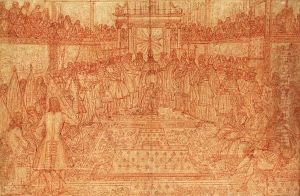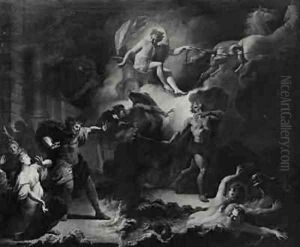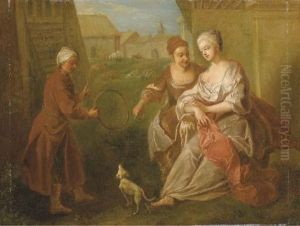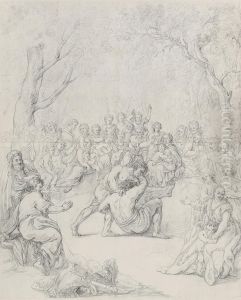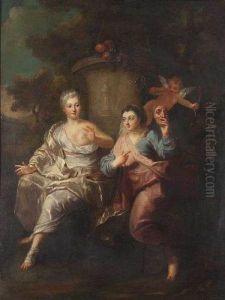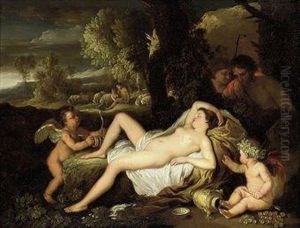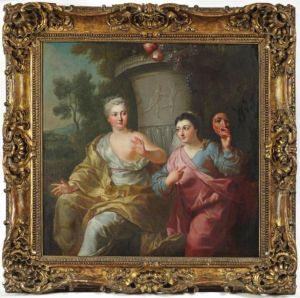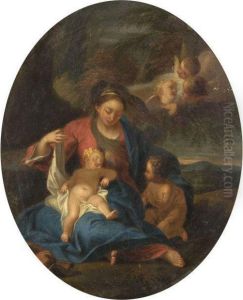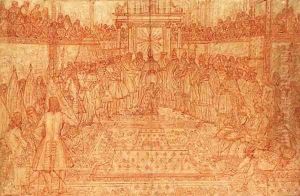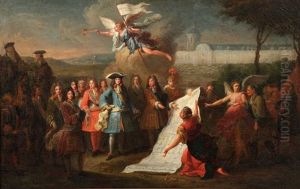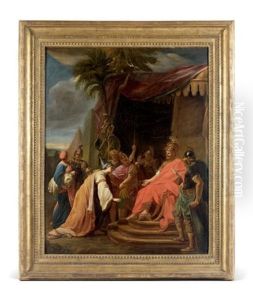Pierre Dulin Paintings
Pierre Dulin was a French painter and draftsman born in 1669 in Paris. His artistic journey began under the tutelage of his father, Charles Dulin, who was also a painter. Pierre further honed his skills by working and studying under prominent artists of the time, such as René-Antoine Houasse and later, the highly influential Charles Le Brun, the court painter to Louis XIV.
Dulin's early works were primarily influenced by the grandiose and dramatic style of French Baroque, which was prevalent during his formative years. He mastered the art of history painting, which sought to depict scenes of historical, mythological, and biblical narratives with a strong emphasis on grandeur and moral lessons, conforming to the tastes and ideologies of the era.
Over time, Dulin developed a reputation for his skillful execution and the ability to imbue his works with a sense of movement and emotional depth. He was accepted into the prestigious Académie Royale de Peinture et de Sculpture in 1703, an institution that played a crucial role in the art scene of France by regulating the arts under the principles of the French Academy.
Throughout his career, Pierre Dulin worked on various commissions for religious and royal patrons, contributing to the embellishment of palaces and churches. His paintings often featured in the collections of notable French nobility, as well as the decoration of the Palace of Versailles, a testament to his recognition and success as an artist.
Despite his achievements, Dulin's works are not as widely known or celebrated as those of some of his contemporaries. Nevertheless, he remains a significant figure in the history of French art, particularly for his contributions to the late Baroque and early Rococo periods.
Pierre Dulin passed away in 1748, leaving behind a legacy of work that reflects the transitional period of French art, bridging the grandeur of the Baroque with the lighter and more decorative elements that would come to characterize the Rococo style. His paintings, while not always at the forefront of art historical discourse, continue to be studied for their technical prowess and historical value.
